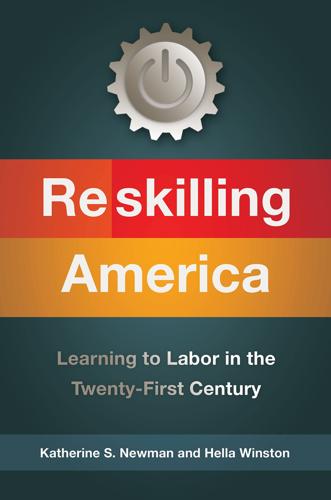
Reskilling America: Learning to Labor in the Twenty-First Century
by
Katherine S. Newman
and
Hella Winston
Published 18 Apr 2016
Academic stature is particularly important to vocational students who concentrate in engineering, which is a college preparatory program. For the eight years that Tri-County has hosted this program, all of its students—who study civil engineering, architecture, aerospace engineering, and digital electronics and get to make use of computers, a 3-D printer, and a CNC (computer numerical control) machine in the process—have gone on to college, most of them to four-year degree programs. In many ways, Cape May County Technical High School, located in the southernmost county of New Jersey, has a lot in common with Tri-County. Physically, it looks similar—long, wide hallways, spacious shops, and a student body apparently free of the kind of cliquishness that abounds in most high schools.
…
For young people looking for a leg up into manufacturing industries, the motivations of the firms locating in states like South Carolina are less important than the opportunities they can look forward to. On any given day, visitors to the Pickens County Career and Technology Center in Liberty, South Carolina, encounter a lot of creativity. In the machine technology shop, they may find students programming CNC (computer numerical control) machines to make plastic worm molds, while in another part of the U-shaped building, in a state-of-the-art kitchen, aspiring chefs might be planning or preparing a multicourse catered meal. These are just two of nineteen different programs offered at the career center, which also offers training in auto technology, health sciences, mechatronics, machine tools, masonry, electricity, carpentry, graphic communications, computer networking, and mechanical design.
…
German apprentices in ZF Lemförde, who are training in mechatronics and expect to join a workforce that produces drive trains for sophisticated cars, are not experts in algebra or calculus. But the last phase of their training involves complex problems that require them to use skills—including the application of computer numerical control machines—to solve vexing problems that have cropped up that year on the shop floor. What ZF is looking for in an apprentice, particularly one they plan to take on as a full-time worker, is that deductive logic and the ability to deploy it to a problem that is unfamiliar, where there is no ready-made solution.

Frugal Innovation: How to Do Better With Less
by
Jaideep Prabhu Navi Radjou
Published 15 Feb 2015
The company was potentially missing 70–80% of its customers’ wallet share. So ADEO is launching a new initiative to expand its retail stores by adding a physical “workspace”, where customers can come not just to buy but also to make things, using traditional tools as well as cutting-edge automated 3D printers and CNC (computer numerical control) cutters. Customers will get training and support from ADEO’s employees and be assisted by other expert users. The strategy is to evolve the buyer–seller relationship into a value co-creation model. Calmes believes that this new model will also yield environmental and social benefits. For instance, when a washing machine breaks down because of a faulty part, rather than disposing of the whole appliance, the owner could walk into a Leroy Merlin store nearby and 3D-print a new spare part.
…
Index 3D printers 18, 47–9, 50, 128, 132, 134, 152, 166 3D printing 9, 47–9, 50, 51, 52, 132, 151–2, 206 4D revolution 53–4 A Accor 172–6 Accountable Care Solutions 211 Active Health Management 211 adaptability 90, 154 additive manufacturing 47–9 ADEO Group 127, 128 advertising 24, 61–3, 71–2 aerosols 95, 96 Aetna 32, 208–13, 213, 215 Affinnova 31, 141 affordability 3, 82, 136, 153, 161, 172, 194, 216 in emerging markets 4, 56, 120, 198, 206 health-care innovations 202–3 and quality 1, 3, 9, 12, 75, 120–1, 198, 206 affordances 120–1 Africa 40, 56, 146, 161, 164, 197 financial services 198, 201 IBM in 200–2 innovation potential 200–2 as market 12, 169, 197–8, 199 ageing populations 109, 194 ageing workforce 13, 29, 49, 153 agility 26, 41, 69, 75, 143, 169–70 in innovation 21, 27, 33–4, 42–3, 72, 154, 167, 173, 176, 206 in manufacturing 44–5, 49, 52 Akerman, Dave 136 Air Liquide 205–7 air pollution 74, 78, 187, 200 Airbnb 10, 17, 85, 136, 140, 163, 173, 175 aircraft 68, 149 parts 48–9, 49, 121, 151–2 airlines 60, 121 Alteryx 32 Amazon 46, 60–1, 150 Amelio, Gil 68–9 AmEx (American Express) 161–2, 167, 215 Amgen 45 Anderson, Chris 18 Android operating system 130, 172 AOL 42 Apple 17, 24, 68–9, 71, 99, 150, 155, 172 Apple TV 62 apps 99, 106, 107, 108, 111–12, 124–5, 148 Arduino 135 Ariely, Dan 132 Arla Foods 37 artists 88, 93 ASDA 158–9, 159 Asia 161, 164, 200 aspirations 88–9, 119–20, 198 assets digitising 65–6 flexing see flexing assets reusing 92–3 sharing 159–61, 167 AT&T 21 ATMI 88 Auchan 13, 126, 128, 215 austerity 5, 6–7, 23 Australia 5, 62, 146, 200 Autodesk 48, 92, 132, 196–7 Automatic 131 automation 49–50 Avon 146 AXA 116 Ayed, Anne-Christine 75, 76 B B Corps (Benefit Corporations) 82 B2B (business-to-business) sectors 25–6, 34, 57, 142, 161, 175, 212 B2C (business-to-consumer) companies 25, 34, 212 Badrinath, Vivek 174 BAE Systems 48–9 Ban, Shigeru 93 Bangladesh 66 Bank of America 155 banking services 13, 17, 57, 161–2, 198 see also financial services Banner Health Network 210 Banzi, Massimo 135 Barber, Michael 181 Barclays 100, 115, 117, 215 Barry, Mike 183–4, 187 Bayer 66–7 Bazin, Sébastien 173 BBVA 125 Béhar, Yves 110 Belgium 103 Benefit Corporations (B Corps) 82 Benelux countries 7, 103 Benetton 67 Benoît, Paul 89 Berg 89 Bergh, Chip 122–3 Bertolini, Mark 208–9, 212, 213, 217 BHAGs (“big, hairy audacious” goals) 90–1, 158–9, 179, 191–2 Biasiotta, Bruno 123 big data 32–3, 117, 150 big-box retailers 9, 18, 137 “bigger is better” 2, 8, 14–15, 104 biomimetics (or biomimicry) 84 Birol, Jacques 163–4 BlaBlaCar 10, 85, 163 Blanchard, David 94, 96 Bloomberg, Michael 18, 79, 133 BMI (business model innovation) 192 BMW 47, 62–3, 86 BNP Paribas 168–9 Boeing 92, 144 Bolland, Marc 180–1, 186 Bontha, Ven 59 Booz & Company (now Strategy&) 6, 22, 23, 28, 171 Bosch 156 Boston Consulting Group 55, 64, 116, 145, 217 Botsman, Rachel 10 bottom-of-pyramid (BOP) customers 161, 203, 207 Bouygues Immobilier 90 BP 169 BPS (by-product synergy) 159 Brabeck-Letmathe, Peter 44, 78 brand ambassadors 143, 145 brand loyalty 46, 100, 204, 215 branding 15, 108, 119–20, 156 brands 1, 71, 139, 141, 143, 154, 165–6, 215 “conversations” with 129, 131–2 working together 154, 156–7 Braungart, Michael 82 Brazil 40, 74, 102, 146, 188, 199 emerging market 4, 12, 38, 146, 197, 199 Bretton Woods Conference (1944) 104 Brin, Sergey 63 BringBee 85 Bross, Matt 37–8, 171 Brown, Tim 121 Brusson, Nicolas 163 BT 37–8, 171 BTG (British Technology Group) 171 budgeting, personal 124–5 budgets 6–7, 36, 42 Buffett, Warren 138 buildings 196–7 bureaucracy 36, 63–4, 65, 70, 165, 169, 173, 182 business, primary purpose of 14 business model innovation (BMI) 192 business models 2, 34, 38, 80, 118, 205, 216, 217 changing 190–3, 213 business opportunities 36, 188–9, 190 business process re-engineering 192 business strategy 34 business-to-business see B2B business-to-consumer see B2C by-product synergy (BPS) 159 C C2C (cradle-to-cradle) design 75, 77, 82, 84, 97 Cacciotti, Jerry 22, 23 CAD (computer-aided design) 47, 65, 132, 165 California 79, 99 Calmes, Stéphane 127, 128 Camp, Garrett 163 Canada 5, 102 cannibalisation conundrum 15, 117–18 capital costs 45 car insurance 116 car sharing 10, 17, 85, 86, 108, 123, 163 car-related services 62–3, 116 Caravan Shop 89 carbon emissions 102, 103, 196 reducing 78–9, 106–7, 159, 160, 174 stabilising 184, 186 carbon footprint 94, 100, 102, 156, 184, 186 Carrefour 121–2, 157, 174 cars 89, 92, 116, 119–20, 144, 155, 156 electric 47, 86, 172 emissions 47, 106–7 fuel consumption 47, 106–7 fuel efficiency 8, 12, 24, 47, 78, 131, 197 low-cost 2–4 personalisation 129–30 related services 62–3 standards for 78–9 see also BMW; Ford; Nissan; Renault; Tesla; Toyota Caterpillar 31, 55 CellScope 110 Cemex 59 centralisation 9, 44, 51 CEOs 34, 40, 168, 203–5, 204 certification, sustainability 84 Chaparral Steel 159 chemical industry 33, 58, 66–7 chemical usage, reducing 79 Cheshire, Ian 185–6 Chesky, Brian 163 Chevron 170 China 44, 83, 102, 144, 213, 216 air pollution 187, 200 emerging market 4, 38, 169, 197, 205 innovation in 169, 200 mobile phones 198 R&D 40, 188, 206 selling into 187–8 shifting production from 55, 56 Christchurch (New Zealand) 93 Chrysler 166 circular economy 9, 76–7, 80–4, 159–60, 195–6 “Circular Economy 100” 76–7, 86 circular supply chains 193 Cisco 17, 29, 65, 110 CISL (University of Cambridge Institute for Sustainability Leadership) 158–9 cities 107, 153 Citigroup 161 climate change 8, 100 closed-loop products 86, 91, 185, 192–3 cloud computing 60, 61, 157, 169 CMF-A car platform 4–5, 198–9 CNC (computer numerical control) cutters 128, 134, 152 co-branding 143 co-creation 126–9, 202–3, 206–7 see also collaboration; horizontal economy; prosumers co-distribution 143 co-marketing 143 co-operation 64–5, 69, 70–1 co-opetition 158–9 Coase, Ronald 133 Coca-Cola 57, 62, 142, 154 “cold chains” 57 CoLearnr 114 Collaborating Centre on Sustainable Consumption and Production (CSCP) 193–4 collaboration 76, 114, 138–9, 176, 211, 217–18 cross-functional 36–8, 39, 71–2 see also hyper-collaboration; TechShop collaborative consumption see sharing economy collaborative manufacturing 50–1 collective buying platforms 137 Commonwealth Fund 110 communities of customers 129, 131, 132–3 local 52, 57, 146, 206–7 commuting 131 competition 22, 27, 102, 189 competitive advantage 15–16, 80, 195 competitors 19, 26, 148, 149–50, 172, 215 emerging markets 16, 205–6, 216 engaging 158–9, 167 frugal 16–18, 26, 216 complexity 24, 64 components 3, 67 computer numerical control see CNC computer-aided design (CAD) 47, 65, 132, 165 Comstock, Beth 40–1, 149, 150, 151, 170 concentration 96 Concept Lab 211 concept testing 25, 31, 72, 191 Cone, Carol 7 congestion 108, 201 constraints 4–5, 22, 34, 36, 42, 207, 217 consumer behaviour 3, 6, 97, 98–101 shaping xix, 99–101, 105–9, 125 Consumer Empowerment Index 103 consumer spending 103 consumers 8, 27, 37, 97, 105 developed-world 2, 7, 9, 102 dissatisfaction 130–1 empowerment 22, 105, 106 environmental awareness 101–2, 105 frugal 197–200 of the future 193–4 innovative ideas from 50–1 with particular needs 194–5 power 102–4, 139 social experience 139 and sustainability 95, 97, 101–4 trust of 143 young 16, 85, 86, 122, 124, 131 see also customers; prosumers consumption 85, 101–6, 115, 124, 193 continuous processing 44–5, 47, 50 Cook, Scott 19 core, focusing on 68–9 Cornillon, Paul 37 Corporate Home Exchange 175 corporate leaders 122–4, 180–1, 203–5 corporate social responsibility see CSR Cortese, Amy 138 cost effectiveness 12, 34, 149, 164, 172, 188, 190, 191 consumer energy use 53 customisation 67 health care 202 innovation 21, 173 micro-factories 52 Costco 18 costs 3D printers 48 capital costs 45 development costs 22, 36 distribution costs 54, 55, 96 electricity generation 104 energy costs 161, 190 environmental costs 11 fuel costs 121 of good-enough approach 27 health-care costs 13, 109 innovation costs 168, 171 inventory costs 54 life-cycle costs 12, 24, 196 maintenance costs 48–9, 66 manufacturing costs 47, 48, 52 operating costs 45, 215 production costs 9, 83 raw materials 153, 161, 190 reducing 11, 46, 47, 60, 84, 89, 160, 167, 200 resource costs 78, 203 shipping costs 55, 59 supply chain 58, 84 transaction costs 133 wage costs 48 Coughlin, Bill 167 Coursera 61, 112 Coye, Molly 202 cradle-to-cradle see C2C design creativity 88, 94, 128, 130, 135, 163–4, 199 in organisations 63–4, 70, 71 credit culture 115–16 CRM (customer relationship management) systems 59, 157 cross-functional collaboration 36–8, 39, 71–2 crowdfunding 17, 48, 132, 137–9, 152 crowdsourcing 28–9, 50–1, 126, 140, 143, 152, 202 platforms 142, 150–1, 151, 152 CSCP (Collaborating Centre on Sustainable Consumption and Production) 193–4 CSR (corporate social responsibility) 77, 82, 94, 161 culture, organisational see organisational culture “culture of simplification” 170 curiosity 153–4 customer behaviour see consumer behaviour customer experience, enhancing 75 customer feedback 31–2, 33, 72, 152, 170, 192 customer immersion labs 31–2 customer loyalty 28, 68, 77, 80, 124, 129, 131–2, 215 customer needs 37, 58, 90, 139–40, 170, 192, 206 changing 28, 38, 51, 127, 150, 168, 205 diversity 38, 46, 51 R&D disconnect from 26, 38 customer preferences 58, 67, 75 customer relationship management see CRM customer satisfaction 65, 128, 130–1 customer service 25–6, 127–8, 147 customer visits 18, 20, 128 customers 19, 27, 46, 76, 148, 205 alienating 24–6 behaviour see consumer behaviour bottom-of-pyramid 12–13, 161, 203, 207 communities of 129, 131, 132–3 cost-conscious 3, 6, 7, 22, 26, 156, 189, 215 dreams 140–1 eco-awareness 22, 26, 54, 75, 78, 93, 156, 195–6, 215 in emerging markets 200 engaging with 20–1, 24–6, 27–33, 34, 35, 38–9, 42–3, 115, 128, 170 as experts 146 focus on 19–21, 43, 62, 157–8, 204 goodwill of 84 motivation for change 117 multiple roles 143–6 needs see customer needs outsourcing to 143 participation 128–9 profligate 115–16 R&D and 27–8, 31–2, 38, 43 rewards for 147–8 shared 156–8 used to motivate employees 205–7 young 16, 85, 86, 122, 124, 131 see also consumers; prosumers customisation 9, 46, 47, 48, 51–2, 57–8, 67, 72 CVS Health 7 D D2D Fund 162 Dacia 2–4, 156, 179 Dannon 141 Danone 66, 141, 184, 186 Darchis, François 205–6, 207 DARPA (Defence Advanced Research Projects Agency) 49 Darukhanavala, P.P.
…
Index 3D printers 18, 47–9, 50, 128, 132, 134, 152, 166 3D printing 9, 47–9, 50, 51, 52, 132, 151–2, 206 4D revolution 53–4 A Accor 172–6 Accountable Care Solutions 211 Active Health Management 211 adaptability 90, 154 additive manufacturing 47–9 ADEO Group 127, 128 advertising 24, 61–3, 71–2 aerosols 95, 96 Aetna 32, 208–13, 213, 215 Affinnova 31, 141 affordability 3, 82, 136, 153, 161, 172, 194, 216 in emerging markets 4, 56, 120, 198, 206 health-care innovations 202–3 and quality 1, 3, 9, 12, 75, 120–1, 198, 206 affordances 120–1 Africa 40, 56, 146, 161, 164, 197 financial services 198, 201 IBM in 200–2 innovation potential 200–2 as market 12, 169, 197–8, 199 ageing populations 109, 194 ageing workforce 13, 29, 49, 153 agility 26, 41, 69, 75, 143, 169–70 in innovation 21, 27, 33–4, 42–3, 72, 154, 167, 173, 176, 206 in manufacturing 44–5, 49, 52 Akerman, Dave 136 Air Liquide 205–7 air pollution 74, 78, 187, 200 Airbnb 10, 17, 85, 136, 140, 163, 173, 175 aircraft 68, 149 parts 48–9, 49, 121, 151–2 airlines 60, 121 Alteryx 32 Amazon 46, 60–1, 150 Amelio, Gil 68–9 AmEx (American Express) 161–2, 167, 215 Amgen 45 Anderson, Chris 18 Android operating system 130, 172 AOL 42 Apple 17, 24, 68–9, 71, 99, 150, 155, 172 Apple TV 62 apps 99, 106, 107, 108, 111–12, 124–5, 148 Arduino 135 Ariely, Dan 132 Arla Foods 37 artists 88, 93 ASDA 158–9, 159 Asia 161, 164, 200 aspirations 88–9, 119–20, 198 assets digitising 65–6 flexing see flexing assets reusing 92–3 sharing 159–61, 167 AT&T 21 ATMI 88 Auchan 13, 126, 128, 215 austerity 5, 6–7, 23 Australia 5, 62, 146, 200 Autodesk 48, 92, 132, 196–7 Automatic 131 automation 49–50 Avon 146 AXA 116 Ayed, Anne-Christine 75, 76 B B Corps (Benefit Corporations) 82 B2B (business-to-business) sectors 25–6, 34, 57, 142, 161, 175, 212 B2C (business-to-consumer) companies 25, 34, 212 Badrinath, Vivek 174 BAE Systems 48–9 Ban, Shigeru 93 Bangladesh 66 Bank of America 155 banking services 13, 17, 57, 161–2, 198 see also financial services Banner Health Network 210 Banzi, Massimo 135 Barber, Michael 181 Barclays 100, 115, 117, 215 Barry, Mike 183–4, 187 Bayer 66–7 Bazin, Sébastien 173 BBVA 125 Béhar, Yves 110 Belgium 103 Benefit Corporations (B Corps) 82 Benelux countries 7, 103 Benetton 67 Benoît, Paul 89 Berg 89 Bergh, Chip 122–3 Bertolini, Mark 208–9, 212, 213, 217 BHAGs (“big, hairy audacious” goals) 90–1, 158–9, 179, 191–2 Biasiotta, Bruno 123 big data 32–3, 117, 150 big-box retailers 9, 18, 137 “bigger is better” 2, 8, 14–15, 104 biomimetics (or biomimicry) 84 Birol, Jacques 163–4 BlaBlaCar 10, 85, 163 Blanchard, David 94, 96 Bloomberg, Michael 18, 79, 133 BMI (business model innovation) 192 BMW 47, 62–3, 86 BNP Paribas 168–9 Boeing 92, 144 Bolland, Marc 180–1, 186 Bontha, Ven 59 Booz & Company (now Strategy&) 6, 22, 23, 28, 171 Bosch 156 Boston Consulting Group 55, 64, 116, 145, 217 Botsman, Rachel 10 bottom-of-pyramid (BOP) customers 161, 203, 207 Bouygues Immobilier 90 BP 169 BPS (by-product synergy) 159 Brabeck-Letmathe, Peter 44, 78 brand ambassadors 143, 145 brand loyalty 46, 100, 204, 215 branding 15, 108, 119–20, 156 brands 1, 71, 139, 141, 143, 154, 165–6, 215 “conversations” with 129, 131–2 working together 154, 156–7 Braungart, Michael 82 Brazil 40, 74, 102, 146, 188, 199 emerging market 4, 12, 38, 146, 197, 199 Bretton Woods Conference (1944) 104 Brin, Sergey 63 BringBee 85 Bross, Matt 37–8, 171 Brown, Tim 121 Brusson, Nicolas 163 BT 37–8, 171 BTG (British Technology Group) 171 budgeting, personal 124–5 budgets 6–7, 36, 42 Buffett, Warren 138 buildings 196–7 bureaucracy 36, 63–4, 65, 70, 165, 169, 173, 182 business, primary purpose of 14 business model innovation (BMI) 192 business models 2, 34, 38, 80, 118, 205, 216, 217 changing 190–3, 213 business opportunities 36, 188–9, 190 business process re-engineering 192 business strategy 34 business-to-business see B2B business-to-consumer see B2C by-product synergy (BPS) 159 C C2C (cradle-to-cradle) design 75, 77, 82, 84, 97 Cacciotti, Jerry 22, 23 CAD (computer-aided design) 47, 65, 132, 165 California 79, 99 Calmes, Stéphane 127, 128 Camp, Garrett 163 Canada 5, 102 cannibalisation conundrum 15, 117–18 capital costs 45 car insurance 116 car sharing 10, 17, 85, 86, 108, 123, 163 car-related services 62–3, 116 Caravan Shop 89 carbon emissions 102, 103, 196 reducing 78–9, 106–7, 159, 160, 174 stabilising 184, 186 carbon footprint 94, 100, 102, 156, 184, 186 Carrefour 121–2, 157, 174 cars 89, 92, 116, 119–20, 144, 155, 156 electric 47, 86, 172 emissions 47, 106–7 fuel consumption 47, 106–7 fuel efficiency 8, 12, 24, 47, 78, 131, 197 low-cost 2–4 personalisation 129–30 related services 62–3 standards for 78–9 see also BMW; Ford; Nissan; Renault; Tesla; Toyota Caterpillar 31, 55 CellScope 110 Cemex 59 centralisation 9, 44, 51 CEOs 34, 40, 168, 203–5, 204 certification, sustainability 84 Chaparral Steel 159 chemical industry 33, 58, 66–7 chemical usage, reducing 79 Cheshire, Ian 185–6 Chesky, Brian 163 Chevron 170 China 44, 83, 102, 144, 213, 216 air pollution 187, 200 emerging market 4, 38, 169, 197, 205 innovation in 169, 200 mobile phones 198 R&D 40, 188, 206 selling into 187–8 shifting production from 55, 56 Christchurch (New Zealand) 93 Chrysler 166 circular economy 9, 76–7, 80–4, 159–60, 195–6 “Circular Economy 100” 76–7, 86 circular supply chains 193 Cisco 17, 29, 65, 110 CISL (University of Cambridge Institute for Sustainability Leadership) 158–9 cities 107, 153 Citigroup 161 climate change 8, 100 closed-loop products 86, 91, 185, 192–3 cloud computing 60, 61, 157, 169 CMF-A car platform 4–5, 198–9 CNC (computer numerical control) cutters 128, 134, 152 co-branding 143 co-creation 126–9, 202–3, 206–7 see also collaboration; horizontal economy; prosumers co-distribution 143 co-marketing 143 co-operation 64–5, 69, 70–1 co-opetition 158–9 Coase, Ronald 133 Coca-Cola 57, 62, 142, 154 “cold chains” 57 CoLearnr 114 Collaborating Centre on Sustainable Consumption and Production (CSCP) 193–4 collaboration 76, 114, 138–9, 176, 211, 217–18 cross-functional 36–8, 39, 71–2 see also hyper-collaboration; TechShop collaborative consumption see sharing economy collaborative manufacturing 50–1 collective buying platforms 137 Commonwealth Fund 110 communities of customers 129, 131, 132–3 local 52, 57, 146, 206–7 commuting 131 competition 22, 27, 102, 189 competitive advantage 15–16, 80, 195 competitors 19, 26, 148, 149–50, 172, 215 emerging markets 16, 205–6, 216 engaging 158–9, 167 frugal 16–18, 26, 216 complexity 24, 64 components 3, 67 computer numerical control see CNC computer-aided design (CAD) 47, 65, 132, 165 Comstock, Beth 40–1, 149, 150, 151, 170 concentration 96 Concept Lab 211 concept testing 25, 31, 72, 191 Cone, Carol 7 congestion 108, 201 constraints 4–5, 22, 34, 36, 42, 207, 217 consumer behaviour 3, 6, 97, 98–101 shaping xix, 99–101, 105–9, 125 Consumer Empowerment Index 103 consumer spending 103 consumers 8, 27, 37, 97, 105 developed-world 2, 7, 9, 102 dissatisfaction 130–1 empowerment 22, 105, 106 environmental awareness 101–2, 105 frugal 197–200 of the future 193–4 innovative ideas from 50–1 with particular needs 194–5 power 102–4, 139 social experience 139 and sustainability 95, 97, 101–4 trust of 143 young 16, 85, 86, 122, 124, 131 see also customers; prosumers consumption 85, 101–6, 115, 124, 193 continuous processing 44–5, 47, 50 Cook, Scott 19 core, focusing on 68–9 Cornillon, Paul 37 Corporate Home Exchange 175 corporate leaders 122–4, 180–1, 203–5 corporate social responsibility see CSR Cortese, Amy 138 cost effectiveness 12, 34, 149, 164, 172, 188, 190, 191 consumer energy use 53 customisation 67 health care 202 innovation 21, 173 micro-factories 52 Costco 18 costs 3D printers 48 capital costs 45 development costs 22, 36 distribution costs 54, 55, 96 electricity generation 104 energy costs 161, 190 environmental costs 11 fuel costs 121 of good-enough approach 27 health-care costs 13, 109 innovation costs 168, 171 inventory costs 54 life-cycle costs 12, 24, 196 maintenance costs 48–9, 66 manufacturing costs 47, 48, 52 operating costs 45, 215 production costs 9, 83 raw materials 153, 161, 190 reducing 11, 46, 47, 60, 84, 89, 160, 167, 200 resource costs 78, 203 shipping costs 55, 59 supply chain 58, 84 transaction costs 133 wage costs 48 Coughlin, Bill 167 Coursera 61, 112 Coye, Molly 202 cradle-to-cradle see C2C design creativity 88, 94, 128, 130, 135, 163–4, 199 in organisations 63–4, 70, 71 credit culture 115–16 CRM (customer relationship management) systems 59, 157 cross-functional collaboration 36–8, 39, 71–2 crowdfunding 17, 48, 132, 137–9, 152 crowdsourcing 28–9, 50–1, 126, 140, 143, 152, 202 platforms 142, 150–1, 151, 152 CSCP (Collaborating Centre on Sustainable Consumption and Production) 193–4 CSR (corporate social responsibility) 77, 82, 94, 161 culture, organisational see organisational culture “culture of simplification” 170 curiosity 153–4 customer behaviour see consumer behaviour customer experience, enhancing 75 customer feedback 31–2, 33, 72, 152, 170, 192 customer immersion labs 31–2 customer loyalty 28, 68, 77, 80, 124, 129, 131–2, 215 customer needs 37, 58, 90, 139–40, 170, 192, 206 changing 28, 38, 51, 127, 150, 168, 205 diversity 38, 46, 51 R&D disconnect from 26, 38 customer preferences 58, 67, 75 customer relationship management see CRM customer satisfaction 65, 128, 130–1 customer service 25–6, 127–8, 147 customer visits 18, 20, 128 customers 19, 27, 46, 76, 148, 205 alienating 24–6 behaviour see consumer behaviour bottom-of-pyramid 12–13, 161, 203, 207 communities of 129, 131, 132–3 cost-conscious 3, 6, 7, 22, 26, 156, 189, 215 dreams 140–1 eco-awareness 22, 26, 54, 75, 78, 93, 156, 195–6, 215 in emerging markets 200 engaging with 20–1, 24–6, 27–33, 34, 35, 38–9, 42–3, 115, 128, 170 as experts 146 focus on 19–21, 43, 62, 157–8, 204 goodwill of 84 motivation for change 117 multiple roles 143–6 needs see customer needs outsourcing to 143 participation 128–9 profligate 115–16 R&D and 27–8, 31–2, 38, 43 rewards for 147–8 shared 156–8 used to motivate employees 205–7 young 16, 85, 86, 122, 124, 131 see also consumers; prosumers customisation 9, 46, 47, 48, 51–2, 57–8, 67, 72 CVS Health 7 D D2D Fund 162 Dacia 2–4, 156, 179 Dannon 141 Danone 66, 141, 184, 186 Darchis, François 205–6, 207 DARPA (Defence Advanced Research Projects Agency) 49 Darukhanavala, P.P.
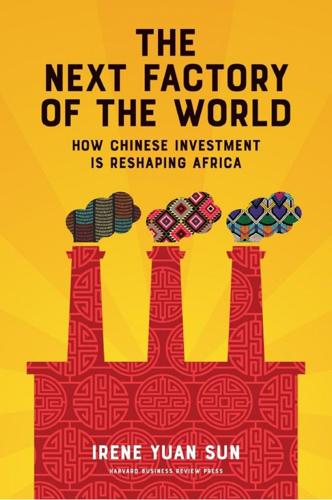
The Next Factory of the World: How Chinese Investment Is Reshaping Africa
by
Irene Yuan Sun
Published 16 Oct 2017
I was starting to understand Lin’s point. “There was also KAM,” I piped up. After the TSC stall, the Kenyan vice president’s office had asked us to reach out to the Kenya Association of Manufacturers (KAM). When we met with Rajen Shah, the association’s chairman, he immediately understood the new business opportunities that computer numerical control and other modern machining techniques would bring to KAM’s 800 members, who represent the entirety of Kenya’s manufacturing sector. Shah proposed a timeshare model whereby they could lease the advanced machinery and pay for Chinese trainers for their workers. He had wanted to move quickly: he proposed bringing up the idea at the association members’ meeting the very next week and running a survey that same week to ascertain precise demand for each type of machinery.
…
That is to say, unlike what robotics alarmists would have you believe, no clear break exists between our so-called robotics age and what came before: as long as manufacturing has existed, factories have continually introduced new labor-saving technologies. The assembly line, precision tooling machines, automated wire-guided vehicles, computer numerical control systems—all these are major labor-saving technologies that are widespread in manufacturing. One might think that each time such a technology is introduced, manufacturing jobs will disappear, yet that has never been the case. Human ingenuity in inventing new products and human voracity in consuming ever more goods per person have ensured the continued expansion of manufacturing output and manufacturing jobs, even as it takes fewer people to produce each unit of output.

Makers
by
Chris Anderson
Published 1 Oct 2012
Organizations as large as the Pentagon’s research group—the Defense Advanced Research Program Administration (DARPA)—and General Electric are using open innovation for creating everything from small drones for the Army to smart electric outlets in your home. Of course the New Industrial Revolution is not limited to open innovation. Conventional proprietary product development benefits from the same desktop prototyping tools, from 3-D printers to CNC (computer numerical control) routers. These new capabilities are accelerating innovation in the biggest companies in the world, from Ford’s automobile interiors to IKEA’s new kitchenware. As we’ll see later, companies such as General Electric are using Maker-like community innovation methods among their own employees to develop proprietary products—open innovation doesn’t have to be wide open.
…
You can even print human organs out of living cells, by squirting a fluid with suspended stem cells onto a support matrix, much as your inkjet printer squirts ink onto paper. MakerBot Thing-O-Matic 2) CNC MACHINE: While a 3-D printer uses an “additive” technology to make things (it builds them up layer by layer), a CNC (computer numerical control) router or mill can take the same file and make similar products with a “subtractive” technology, which is a fancy way of saying that it uses a drill bit to cut a product out of a block of plastic, wood, or metal. There are countless other specialty CNC machines: CNC quilters and embroidery machines, CNC sign and vinyl cutters (for silk-screening), and CNC paper and fabric cutters for crafters, to name a few.
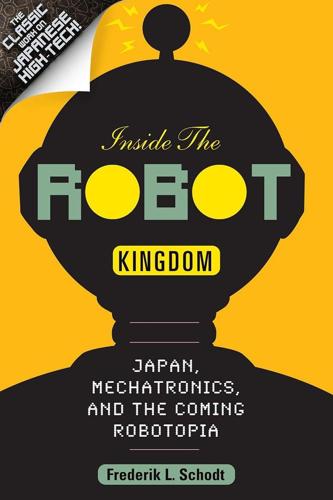
Inside the Robot Kingdom: Japan, Mechatronics and the Coming Robotopia
by
Frederik L. Schodt
Published 31 Mar 1988
As needed, pallets are brought to ground level, where they are picked up by AGV, or automatic guided vehicles, which carry them around the factory floor to staging areas, where they are later transferred to one of fifty "work cells." These cells are usually clusters of automated machining tools—called NC (numerically controlled) and CNC (computer numerically controlled) tools—and yellow industrial robots, whose job it is to unload the material from the carts and feed it to the tools for processing. When an operation is completed, the robot then returns the work piece to the AGV cart, which takes it to another work cell for yet another operation, or to the automatic warehouse to be retrieved at another time.
…
See also karakuri automation acronyms, 40-45 Automax, 210-12 autonomous robots, 49-50, 213, 215, 221 Bandai, 95-98,103-4 biomechanisms, 202, 208 biomechatronics, 204 bipedal robots, 27, 203, 205-7, 225 BORN System, 27, 205 Buddhism, 195-96,198-99, 207-11 Bureau of Astronomy, 70 CAD/CAM (computer-aided design/computer-aided manufacturing), 98,133,175 Canon, 35 Capek, Karel, 29-30, 33, 73,150 Carlisle, Brian, 174 Casio, Kofu calculator factory, 46-48 Chiba Walker, 26 CIM (computer-integrated manufacturing), 44 clean rooms, 181-82 clocks: contribution of, to technological development, 58-59; problems of Japanese, 58-59, 69 CNC (computer numerically controlled) machine tools. See NC machine tools comic books, 73, 75, 79, 81-84,152 continuous path, 36 craftsmanship: as factor in economic success, 162-63; tradition of, 57 cybernetics, 31, 63, 205 Cyborg, 205 Cybot society, 205 Daedalus, 55 Dainichi Kiko, 107,137 Daiwa House Industry, 178-79 dashi floats, 63 definitions of robots: 43, International Standards Organization (ISO), 40; JIRA, 37-38; Kojien, 30; RIA, 37; Webster's New Collegiate Dictionary, 29 degrees of freedom, 35 deindustrialization, 184-85,187-89 Deming, W Edward, 139 Deming Award, 117 design: of ART project robots, 225-33; of industrial robots, 126-27,173-75; of toy robots, 95-98,105 "de-skilling," 163,172 Devol, George C, 31-34, 37, 44, 111 direct-drive robots, 129,149 Doraemon, 80-81,107 dynamic stability, 230 Emperor of Japan, opinion on technology of, 77 Engelberger, Joseph E, 17, 33-35, 43, 111, 113-14,117,122,134,189,196.
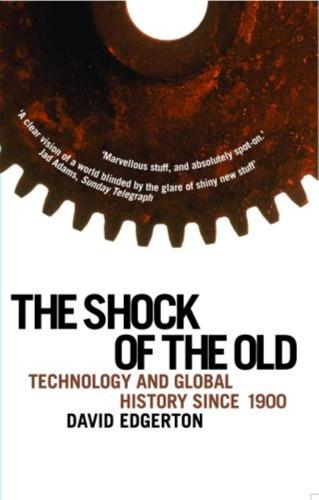
The Shock of the Old: Technology and Global History Since 1900
by
David Edgerton
Published 7 Dec 2006
Early control theory and computing were a spin-off from problems relating to the control of heavy naval guns.40 And one could add other names and other technologies, notably computers and the internet, to the Japanese camera firm Nikon.41 Sometimes examples have been used to help justify military expenditures. At other times the military origin of civilian technology is used to show the negative influence of militarism on modernity.42 An example is the computer-numerically-controlled machine tool, introduced through US air force funding in the 1960s for the manufacture of aircraft, and then very widely diffused. Military funding has pushed technologies towards being more authoritarian than they would otherwise have been. Far from liberating us, modern technology has been the tool of conservative not revolutionary forces.
…
Brazilian aircraft carrier Minas Gerais (Tom Pietrasik) Index Figures in italics refer to captions; those in bold to Tables. 2,4-D herbicide 162–3 17 of October (ship) 94, 124 A A-bomb see atomic bomb abattoirs 173 abortificients 23 abortion 23 Abu Ghraib prison, Iraq 156 academic science, and invention 185–7 acid rain 121 acupuncture 49 Acyclovir 163 advanced gas-cooled reactors (AGRs) 21 AEG 193 aeronautical research 186 aeroplanes ix, xiv, 1, 3, 6, 28, 159, 191 appearance as a new technology 31 civil aircraft 117 and civilianised warfare 139 downplaying of military origins 142 hypersonic 38 killing by 146 and nationalism 116 powered aeroplane innovated in the USA 111 primarily a weapon of war 116, 158 R&D 197 supersonic 38 see also aviation; flight Afghanistan 145, 153 Africa death rate per car 27 guerrilla rebellions 152–3 malaria 27 sub-Saharan income per head 207 African National Congress 122 AGA range 57 Agency for International Development (AID) 157 agent orange 163 Agfa 130, 193 Agfacolor 130 agricultural revolution 64–6 agriculture family farms in the USA and USSR 62–4 horsepower xiii, 33–4 output 53 productivity 65, 74 shift to industry 52 Agrigento, Sicily 78 AIDS 25, 27, 49, 164, 207 Air France 21–2 air transport, cheap 115 air-conditioning 170 aircraft see aeroplanes aircraft industry 116, 158 airships 38, 50, 199 Al-Khahira (Cairo) jet trainer 125 Alang Beach, Gujarat, India 208 Albania 118, 131–2 Aliano, Basilicata, Italy 122–3 alkali 190 Allen & Hanbury 196 Almirante Latorre (battleship) 92 alternating current (AC) electrical systems 8–9, 176 alternatives assumption that there are no alternatives 6–7, 8 comparable alternatives 7–8 using a thing marginally better than alternatives 8 American Civil War 146 American Monarch (ship) 167 Amgen 202 AMO factory, Moscow 126 amodiaquine 26 analytical labs 192 animals husbandry 66 hybrids 190 killing 161, 164, 172, 173–6 anti-aircraft guns 14, 15 anti-malarials 164, 199 anti-missile systems 155–6 anti-virals 163 antibiotics 163, 190 antifungal treatments 164 apartheid 122 Apocalypse Now (film) 152 Arab oil embargo (1973) 122 Arab–Israeli wars 146–7 architecture ‘post-modern’ viii vernacular 41 Argentina builds a jet fighter 124–5 meat exports to Britain 172 national industrial development 118 the picana eléctrica 157 Argentina (liner) 124 Armament and History (Fuller) 141 Armenians 178–9 Armour meat packers 171, 172 Armstrong, Neil viii artillery fire 143, 144, 190 asbestos 42, 43, 211 asbestos-cement 42, 43 Asia: rice production 64–5 astronauts viii AT&T 193, 195 Atebrin (mepacrine) 25 atomic bomb xiv, 15–19, 21, 114–15, 117, 123, 138, 139, 158, 159, 185, 198, 199 atomic power 3, 6 Auschwitz–Birkenau extermination camp, Poland 121, 165, 180–81, 182 Australia maintenance and repair 80 meat trade 172 national industrial development 118 autarky 115, 116, 117–19 Autochrome process 193 autogiro 103 automation 2, 3, 85 Aventis 196 aviation 1, 19, 143 choices in aircraft construction 10 civil 6, 116 and empires 132 engine types 10 maintenance 87–91, 89 power of 141 supersonic stratospheric 3 see also aeroplanes; flight Axis Powers 18 AZT 164 B B-29 bombers 13, 15, 16, 123 B-52 bombers viii, ix, 95, 152, 155 ballistic missiles 154 Bangkok, Thailand long-tailed boats 47 Science Museum 28 Bangladesh motorised country-boats 48, 61 rice production 65 shipbreaking 208 barbed wire 146 Barham, HMS 93–4 BASF 119, 120, 121, 193 battleships x, xiv, 92–4, 93, 97, 141, 142, 143, 148–9, 154 Bayer 193, 194 Bayh–Dole Act (1980) 187 Beechams 196 Beef Trust 171 Belgrano (ARA General Belgrano) 94 Bell Labs 195, 196 Bell telephone 132 Belzec extermination camp, Poland 179 Bergius, Friedrich 120 Berlin–Baghdad railway xi bicycles x, 4, 45, 50–51, 58, 61 bidonvilles 41 Billingham plant, Stockton-on-Tees 119, 121 biological warfare 149 biotechnology 1, 185, 188, 192, 196, 202–3 Biro, Ladislao José 103 biro pen 103 birth control 23 Bishop, Billy 114 Bloodhound anti-aircraft missile ix Blue Star Line 172 boats fishing 49 long-tailed 47–8 motor torpedo 68 motorised country-boats 48–9, 61 bomber aircraft viii, ix, x, xiv, 9, 13, 13–16, 18, 95, 97, 123, 143, 147, 148, 150, 152, 155 Bomber Command 14 bombing atomic 15–19 conventional 12–15 ‘dumb’ bombs 155 ‘smart’ bombs 155 targets 12–13, 14, 15, 16 Borges, Jorge Luis 94 boundaries 117, 131, 132 branding 71 Braun, Werner von 18 Brazil (film) 75 Brezhnev, Leonid 102 Bristol Jupiter engine 88 Britain agricultural yields 64 autarchy 118 aviation 104, 111 car production 69 coal consumption ix cotton industry 36–7, 105, 190 economic growth 206 executions 176 horsepower in First World War 35 maintenance and repair 80 meat imports 172 output per head 109 privatisation of railways 87 R&D 109 railway workshops 98 steam power ix, 105 television 131 truck production 69 two-way movements between Britain/France and Britain/India 111–12 British Airways 21–2 British Electrical Development Association 56 British Empire 135 Brunnental, Soviet Union 62–3 Bumper V-2 rocket 2 Burmese army 145 Burney, Commander Sir Charles Dennistoun 167 buses ix, 96, 98, 191 C cable TV x, 49 Calcutta: rickshaws and cycle-rickshaws 45–6 Cambodia 182 Camden Market, London 33 camels 35 caravans 28, 30 cameras, replica 50 Canada: maintenance statistics 79 cap, the 24 Cape Canaveral, Florida 2 capitalism 76, 128 carbon monoxide 121, 179–80 Carrier, Dr Willis H. 170 Carrier Corporation 170 carrier pigeons 43 Carson, Rachel: Silent Spring 163 carving 28 CASA company 125 cavalry units 35 CDs 7 cement ix, 45 ceremonial occasions: use of reserve technologies 11 Césaire, Aimé 133 CFC gases 211 Chamoiseau, Patrick: Texaco 42–3 Cheliabinsk, Soviet Union 126 Chelmno extermination camp, Poland 179 chemical warfare 164 chemicals 1, 105, 188, 191, 192 chemistry 2, 130, 185, 186 organic 185 synthetic 4, 185 Chicago meatpackers 129–30, 171–5 chickens 66, 163, 164, 174–5 China agriculture 73 and Albania 131–2 atomic weapons as ‘paper tigers’ 19 autarchy 118 bicycle production 45 collective farming abolished 73 control of the internet 137 cotton textiles 65 Cultural Revolution 45, 72 economic growth 109, 112, 207 economy 73 executions 177 export of containers 74 foreign enterprise 137 ‘four big belongings’ 58–9 Great Leap Forward 44–5, 73 a hydraulic society 76 imitation of foreign technologies 112 industrialisation 73 links with Soviet Union (1949–60) 131 low-tech exports 137 Maoists 152 nationalism 137 old small scale technologies 72–3 pig production 66 produces Soviet technology 44 promotion of small-scale rural industries 72–3 rural industries 73 second Sino–Japanese War 140, 179 steel production 73 ‘technological dualism’ 44 Chinese Communist party 73 Chinese First Automotive Works 126 chlorinated organic compounds 161–2 chloroquine 26, 164 cholera 25 Ciba 196 Ciba-Geigy 26 Cierva, Juan de la 103 cinema ix, 203 cities of the poor world 39–40 clinical trials 11–12, 201 clothes: trade in old clothes 81 coal consumption ix hydrogenation of 120, 121–2, 186, 199 Cold War 123 ‘cold-chains’ 170 collectivisation 63, 64, 127 colonialism 39, 134 Common Market 119, 175 communications technologies xiv, 2 Communist movement 60 Companhia Energética de Sao Paulo 99 computer-numerically-controlled machine tool 158–9 computerisation 2 computers ix–x, 1, 158 analogue 7, 9 cheap PCs 71 digital 3, 6, 7, 9 initial cost as a percentage of lifetime cost 78 Concorde 21–2, 38, 96–7 condoms 1, 22–3, 24, 25, 49, 190 Congo War, second 146 contraception vii, x, 1, 22–5, 49, 190 cooking ranges 57 copper 73 corn, hybrid 64 corporate research laboratories 192 corrugated iron 41–3, 50–51, 78 cost-benefit analysis 11–12, 21, 142 cotton industry ix, 36–7, 65, 105, 136 Cotton Industry Act (1959) 38 credit agreements xv creole technologies xii, 39, 43–5, 46–7 creolisation of technology 85 Cuba 36, 207 Cudahy meat packers 171 cultural lag viii, 141, 212 Cultural Revolution 45, 72 cultural significance, measurement of 1 cycle-rickshaws 46–7, 48–9, 191 D Daktarin 164 Dalén, Nils Gustav 57 Datong Locomotive Works, China 50 DC-3 airliner 88, 197 DC-4 aircraft 197, 198 DC-6 aircraft 88 DC-8 jet 88, 197 DDT 26–7, 38, 162–3, 162 De Niro, Robert 75 de-globalisation 212 dependence 39 depression 37 Derwent jet engine 123 design 71 Detroit automation 86 Deutsches Museum, Munich 104 development labs 192 Dewoitine, Emile 125 diaphragm 24 diesel engine 3 differential analysers 7 diffusion vii Digital Signal Processing chip 195 direct current (DC) electrical systems 8, 9, 176 division of labour 72 Dnieper complex, Soviet Union 127 dockyards 91 domestic equipment 81 domestic production 56 ‘domestic science’ 56 domestic servants 56 domestic technologies xiv, 4, 56 domestic work, scientific organisation of 56 donkey carts 28, 30, 49 Dornier, Claude 125 douches 23 Dreadnought (battleship) 92 dreadnoughts 92, 148 Dufay process 130 Du Pont 20, 158, 193, 194–5 Durex 25 E East Germany: hydrogenation 121 Eastman Kodak 130, 193 economic growth 5, 52, 108, 109, 110, 206–7 economic history 3 economies of scale 71 ECT (electroconvulsive therapy) 38 Edison, Thomas 176 Edwards Air Force Base, California viii Egypt Ancient 76 aviation 126 Einsatzgruppen 179 ELAS resistance movement 60 electricity x, 1, 3, 6, 76–7, 185, 188, 190, 192 increased usage 5 electrification 2, 6, 32 electrocution/electric chair 165, 176, 177, 178 electronic communication: change in price 6–7 electronics 3, 99, 105, 191 Elizalde 31 Elliot, Gil: The Twentieth Century Book of the Dead 145–6 EMI 130, 131 empires 132, 134 employment in agriculture 53 in industry 53 service industries 53, 70 enclaves for European colonisers 134 engineering 19 masculinity of 101 mass production 67 engineers xiii, 100–102, 192–3 state 101 engines jet 10 petrol 10 Erikson, Gustaf 95 Europe car accidents 27 car production 69, 70 uptake of new technologies 32 European Union (EU) 200, 206 Eva Péron (liner) 124 F Fairchild Semiconductor 195, 203 Fairfree (factory stern trawler) 167 Falklands war 94 Far East growth rates 207 Faust, Mrs Mary 54 fertilisers 44, 45, 50, 64, 65, 67, 119–20 fertility control 23 feudalism 76 Fiat 69, 127 fibre-optic cables 7, 49 firing squads 176 First World War 31, 34, 34–5, 130 battleships x, 148, 149 casualty rates 146 chemical warfare 164 a chemist’s war 138 deaths 143 developments in artillery practice 143 H.
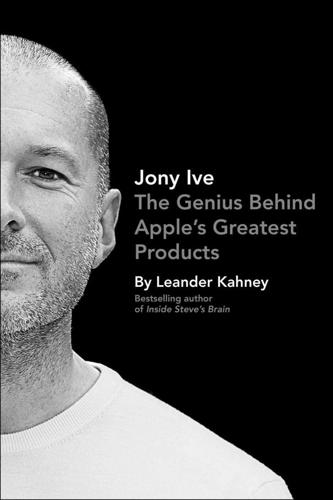
Jony Ive: The Genius Behind Apple's Greatest Products
by
Leander Kahney
Published 14 Nov 2013
“The corporate planning people didn’t get it. They said you can’t do that, but that’s what we did, put it together in different ways. It totally freaked them out. It was great, a lot of fun. We just made it less oppressive.” Brunner had a CAD workstation installed for creating 3-D models of designs along with a computer numeric controls (CNC) milling machine to turn the CAD models into foam ones and a paint shop for testing different colors. “The ID studio at Apple was a cool work space,” recalled Rick English, a photographer who did a lot of work with Apple in the 1980s and 1990s. In 1997, English contributed photos to Kunkel’s book about the design group, AppleDesign, but he also worked with a lot of other design studios in the Valley.
…
“I think that played a great role in how Steve Jobs coming back perceived the team and its capabilities.” When Jobs finally took a tour of Apple’s design studio, he was bowled over by the creativity and rigor he saw. The studio was full of eye-catching mock-ups that the previous regime had been too timid to consider. Jobs also couldn’t help but notice the computer numerical control (CNC) milling machines and a fledgling computer-aided design (CAD) group. Mostly, though, he bonded with the soft-spoken Jony, who would later say that he and Jobs saw eye to eye immediately. “We discussed approaches to forms and materials,” Jony recalled. “We were on the same wavelength.

Radical Technologies: The Design of Everyday Life
by
Adam Greenfield
Published 29 May 2017
To be sure, this is an entry-level model, best suited to whimsical trinkets and rough-and-ready prototyping—exactly the sort of things, in other words, that architecture students are likely to produce in the course of their degree work. But 3D printers like the Replicator 2, as well as the computer numerically controlled (CNC) milling machines and laser cutters elsewhere in the building, might just be the most visible sign of a coming revolution: the digital fabrication of all the things we encounter in the world. We owe the conceptual genesis of the digital fabrication device to the legendary twentieth-century mathematician John von Neumann, who first broached the notion in a thought experiment he entertained as early as the mid-1940s.
…
See Google Bowyer, Adrian, 86, 303, 306 Branch, startup, 246–7, 254 Brandes, Jeff, 256 Brantingham, Jeffrey, 231 Patricia, 232 Paul, 232 Braungart, Michael, 96 British Broadcasting Corporation, BBC, 177 Brown, Henry T., 103 Brown, Joshua, 223–4, 254 Brown, Michael, 231 “buddy punching,” 198 bullshit jobs, 203, 205 Bui, Quoctrung, 192–3 bushido, 266–7 Bushido Project, the, 266 Business Microscope, 197 Buterin, Vitalik, 147–50, 152, 154, 162–4, 167, 169, 172, 175, 177, 179, 303, 311 Byzantium, 69 CAD-Coin, 157 Californian Ideology, the, 283 Carmack, John, 82 cartography, 20 cats, 214 CCTV, 49–50, 54, 241 cellular automata, 86 Champs-Élysées, 1 Chaum, David, 121 Checkpoint Charlie, 70 chess, 263 Chevrolet Camaro, 216–18 Chicago Police Department, 230–1 China, 87, 102, 190, 194, 278–9, 286, 290, 306 Churchill, Winston, 28 circular economy, 92, 96, 99, 288 Ciutat Meridiana, Barcelona neighborhood, 109 climax community, 289 Cockney rhyming slang, 311 code library, 274–5 commons, the, 171–3 computer numerical control, CNC milling, 86, 93, 95, 97, 108, 110, 273 Container Store, 196 cooperatives, 171 cooperative motility, 80 Copenhagen, 31, 51 Cornell Law School, 151 Cortana virtual assistant, 39 Costco, 45 cozy catastrophe, 291 cradle-to-cradle industrial ecosystem. See circular economy The Craftsman (Sennett), 111 Creative Commons, 102–3 CRISPR technique, 298 Crossmatch, startup, 198 Crown Heights, Brooklyn neighborhood, 136 cryptocurrency, 8, 115–44, 145, 148–9, 153, 156, 164–5, 177–8, 248, 273, 279, 290, 293, 318 cryptofinance, 180 cryptography, 116, 118–19, 121–3, 129, 146–7, 176, 178–9 “Custom Notifications,” Chicago Police Department program, 235 cybernetic socialism, 191 DAO, The, distributed autonomous organization, 161–81 data subject, 251 Davao City, Philippines, 31, 43, 46 Day, Jeffrey, 63 distributed denial-of-service attacks, 45 “The Dead” (Joyce), 261 Deep Blue, 263–5 Deep Dream.

The Zero Marginal Cost Society: The Internet of Things, the Collaborative Commons, and the Eclipse of Capitalism
by
Jeremy Rifkin
Published 31 Mar 2014
The first indications of the paradox surfaced at the very beginning of the IT revolution in the early 1960s, with the introduction of the computer on the factory floor. It was called computer numerical control technology. With numerical control, a computer program stores instructions on how a piece of metal should be rolled, lathed, welded, bolted, or painted. The computer program instructs a machine on how to produce a part and directs robots on the factory floor in shaping or assembling parts into products. Numerical control was quickly perceived as “probably the most significant new development in manufacturing technology since Henry Ford introduced the concept of the moving assembly line.”10 Computer numerical control led to a dramatic boost in productivity and was the first leg in the long process of steadily replacing human labor with computerized technology, programmed and managed by small professional and technical work forces.
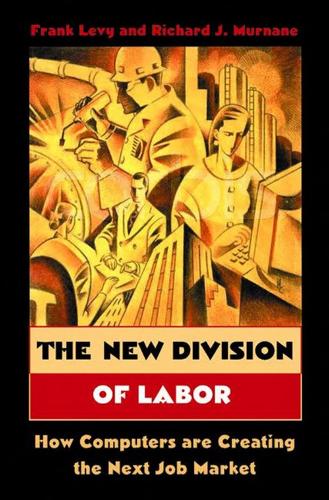
The New Division of Labor: How Computers Are Creating the Next Job Market
by
Frank Levy
and
Richard J. Murnane
Published 11 Apr 2004
The software’s power was its ability to integrate individual views into a three-dimensional visualization. The virtual model substituted for a physical mock-up in checking plans for internal consistency. Once engineers had corrected the plans, CATIA produced the digital settings for the computer-numerically-controlled (CNC) machine tools that would fabricate the 777’s parts. Boeing purchased the CATIA system as part of an effort to pursue several competitive strategies. One was to compete better by increasing design speed. Being first to market confers an advantage in many industries but it is particularly important in civilian aircraft, where two large producers—Boeing and Airbus—vie for a limited number of orders.
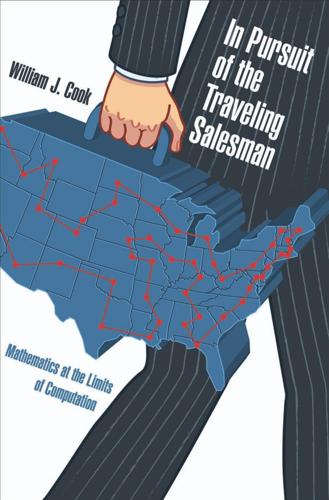
In Pursuit of the Traveling Salesman: Mathematics at the Limits of Computation
by
William J. Cook
Published 1 Jan 2011
The use of TSP algorithms has led to improvements of approximately 10% in the overall throughput of circuit-board production lines.9 Typical problems in this class range in size from several hundred cities up to several thousand cities. Soldering a Printed Circuit Board Wladimir Nickel, an electronics engineer in Germany, wrote that he has adopted Concorde in a follow-up step in circuit-board production, where items are soldered onto the surface of the board. He uses a computer numerical controlled (CNC) machine, equipped with a solder paste dispenser, to print solder at specified locations. His machine is displayed in the photographs given in figure 3.8; the board being created has 256 solder locations and the TSP solution provides the quickest way to move the dispenser through the full set of points.
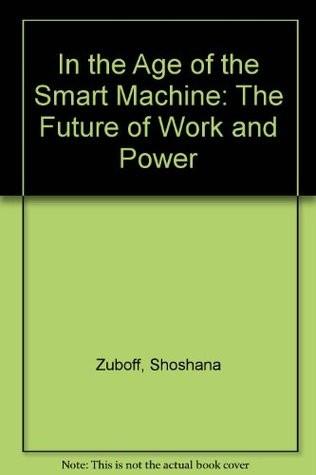
In the Age of the Smart Machine
by
Shoshana Zuboff
Published 14 Apr 1988
The Robot Institute of America indicates that in 1983, 66 percent (31,900) of the world's robots were operating in Japan and 13 percent (6,301) were in the United States. 14 Nobel-prize-winning economist Wassily Leontief has predicted a 30 to 40 percent annual growth rate in the market for industrial robots between 1985 and 1 990. I 5 Computer-numerically-controlled machine tools fashion metal ac- cording to programmed instructions that indicate the desired dimen- sions of a part and the sequence to be followed in the machining pro- cess. Since the late 1970s, these machines have been equipped with microprocessors or dedicated minicomputers and frequently include a screen and keyboard for writing or editing the programs that guide the equipment.
…
In 1 983, numerically controlled machine tools represented only about 5 percent of the machine tools in U.S. metalworking, but this may change rapidly. I? For example, General Motors Corporation has stated that by the end of the 1 980s, 90 percent of all new capital investments will be in computer numerically controlled machines. 18 Flexible manufacturing systems integrate these more discrete appli- cations of technology. They consist of computer-controlled machining Scope of Information Technology in the Modern Workplace 421 centers that sculpt complicated metal parts at high speed and with great reliability, robots that handle the parts, and remotely guided carts that deliver materials.

Whiplash: How to Survive Our Faster Future
by
Joi Ito
and
Jeff Howe
Published 6 Dec 2016
For example, Neri Oxman’s Silk Pavilion—a complex dome cocooned in the silk of more than six thousand silkworms—began as an exploration of the boundaries between digital and biological fabrication.5 As the project evolved, Oxman and her team developed a system they called CNSilk, which used a computer numeric control (CNC) robot to lay out a web of silk threads that guided the silkworms’ movements.6 This both mimicked and extended the silkworms’ ability to create three-dimensional cocoons out of thin single strands of silk. The overall shape of the dome was planned, but the details of the fabric surface emerged from the natural action of the silkworms.
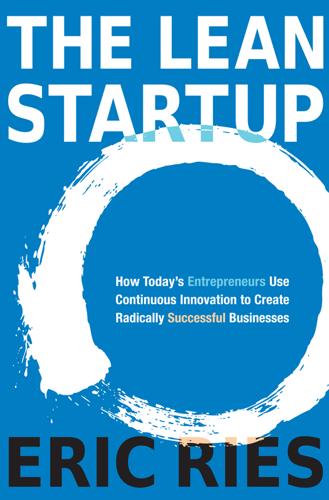
The Lean Startup: How Today’s Entrepreneurs Use Continuous Innovation to Create Radically Successful Businesses
by
Eric Ries
Published 13 Sep 2011
The design also integrated a suction cup/pump mechanism to allow for fast, repeatable attachment to the x-ray panels. Sounds complicated, right? Three days later, the SGW team delivered the first physical prototypes to the client. The prototypes were machined out of aluminum directly from the 3D model, using a technique called computer numerical control (CNC) and were hand assembled by the SGW team. The client immediately took the prototypes to its military contact for review. The general concept was accepted with a number of minor design modifications. In the next five days, another full cycle of design iteration, prototyping, and design review was completed by the client and SGW.
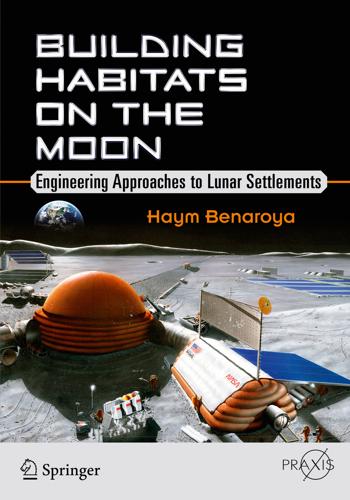
Building Habitats on the Moon: Engineering Approaches to Lunar Settlements
by
Haym Benaroya
Published 12 Jan 2018
Coupled with a latent heat of fusion that is two-thirds, and a specific heat that is three-quarters that of aluminum, these traits allow magnesium to be produced and recycled quickly and with little energy expenditure, when compared with other metals. Magnesium is the most easily machined metal used in engineering designs and has excellent castability. Thus, magnesium replacement parts could be fabricated from regolith using a computer numerical control milling machine, leading to decreased dependence on Earth-based manufacturing. Magnesium is a diamagnetic material, with a magnetic susceptibility of 1.2 x 10−5 that is close to aluminum’s magnetic susceptibility of 2.2 x 10−5. This dimensionless parameter equals zero if the material does not respond to any magnetization.

The Future of the Professions: How Technology Will Transform the Work of Human Experts
by
Richard Susskind
and
Daniel Susskind
Published 24 Aug 2015
This makes outsourcing of particular tasks even easier—it is alleged that in India, for example, on average one new engineering college is founded every day.299 Many of the machines and tools used to construct buildings are now computerized. Rather than being operated by hand, they are directed by a computer system that follows a digital design—known as ‘digital fabrication’, or ‘computer numerical control’ (CNC). Traditionally, these machines were subtractive—the final object was milled out of a larger object, or cut from a large sheet of material. New 3-D printing techniques, a widely discussed technology, instead are additive—they print multiple thin layers of material on top of one another, gradually building up final objects (hence its other name, ‘additive manufacturing’).
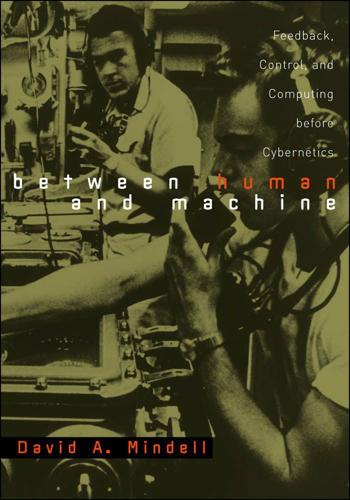
Between Human and Machine: Feedback, Control, and Computing Before Cybernetics
by
David A. Mindell
Published 10 Oct 2002
In the area of control systems, the engineers in one laboratory, MIT’s Servo Lab, led by Gordon Brown, stretched in more directions, pulled by more actors, than any other. The Servo Lab was founded by D-2’s very first contract, developed close relations with Sperry Gyroscope, and joined servomechanisms with telephone engineering. It has a prominent place in postwar histories of computing because of its Whirlwind computer, numerically controlled machine tools, and the SAGE air defense system. Less has been said about its earlier, wartime work. Engineers at the lab merged communications and control, so its founding, its relationship to the NDRC and BuOrd, and its intellectual identity bridge the prewar engineering culture at MIT and the postwar projects.
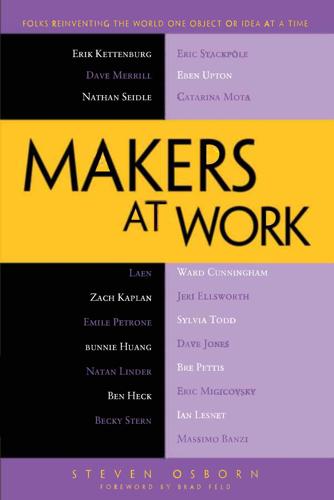
Makers at Work: Folks Reinventing the World One Object or Idea at a Time
by
Steven Osborn
Published 17 Sep 2013
Osborn: 3D printing is a really exciting space in general, it’s exciting to see so much great innovation and competition in this space. I’m excited about what you guys are doing and suspect you’ll do very well. 1 Sam Zell is the US billionaire head of Equity Group Investments, which has holdings ranging from real estate to media to healthcare. 2 The business school at MIT. 3 Computer Numerical Control, or computer automation of physical processes. 4 www.afinia.com/ 5 www.shapeoko.com/ 6 www.shapeways.com/shops/nervous 7 Fused Deposition Method, an additive manufacturing method used in hobbyist 3D printers that utilize ABS or PLA filament. CHAPTER 9 Ben Heck Host The Ben Heck Show Benjamin Heckendorn is the host of The Ben Heck Show (revision3.com/tbhs), sponsored by element14.1 Throughout his career, Ben has been a graphic artist, video editor, pinball machine designer, book author, console modder, and hardware hacker.
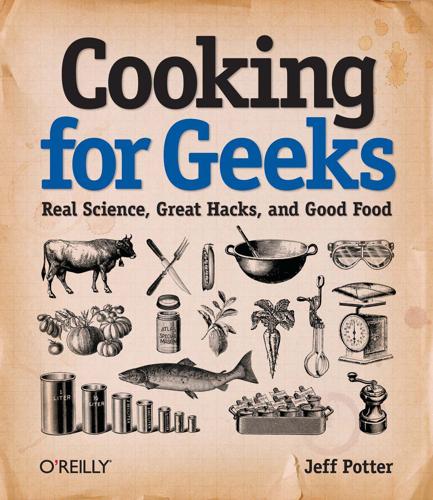
Cooking for Geeks
by
Jeff Potter
Published 2 Aug 2010
For a few high-end restaurants, spending the time involved in making custom molds allows them to create innovative and unusual experiences. Working with fabricators, they’ll create custom silicone molds ranging in shapes of everything from vegetables to eggs, using them to mold asparagus puree set with gelling agents or for signature desserts. Then there’s the geek side of things. If you happen to have access to a CNC (computer numeric control) printer, such as MakerBot’s Cupcake, try printing your own molds and cookie cutters. Here’s an example, using none other than that famous penguin, Tux. (Tux is the Linux kernel’s official mascot.) You’ll need a cookie cutter, sugar cookie dough, and frosting. Create the cookie cutter. This is the hardest part (second hardest, if you’re the type to eat all the cookie dough before getting to the end).
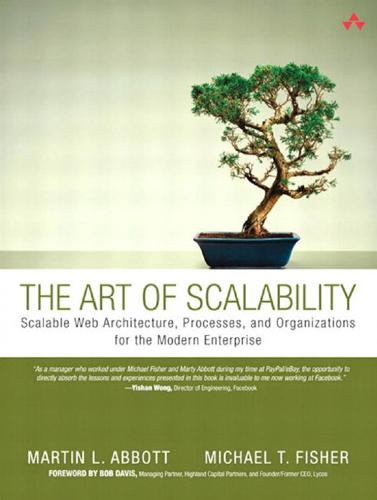
The Art of Scalability: Scalable Web Architecture, Processes, and Organizations for the Modern Enterprise
by
Martin L. Abbott
and
Michael T. Fisher
Published 1 Dec 2009
The problem arises when one type of company thinks of itself, or worse acts as if, it were the other type. To understand this more, we need to dive into the two forms deeper. All different types of organizations require technology support to ensure their processes are efficient and consistent. Today’s manufacturing would be lost without technology from computer numerical control (CNC) machines to ladder logic. These types of companies and technology departments are hopefully upfront and aware of how technology is viewed. It is a support service or cost center that will likely always be viewed as a cost line item in the budget. No matter how scalable, artful, impressive, or on time the tech is, the best these technology systems and projects can strive for is a reduction of cost or improvement in efficiency for the business.
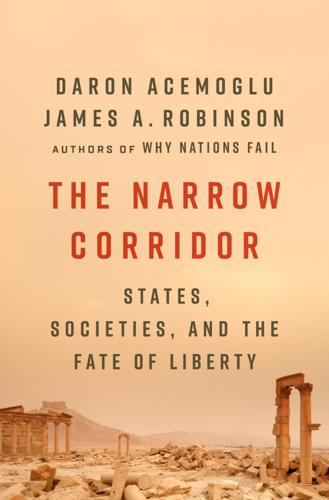
The Narrow Corridor: States, Societies, and the Fate of Liberty
by
Daron Acemoglu
and
James A. Robinson
Published 23 Sep 2019
From the 1940s to the mid-1970s in the U.S. economy, there was rapid productivity growth along with growth of earnings of all education groups, all the way from workers with less than high school education to those with postgraduate degrees. But the bewildering array of new technologies that have transformed workplaces over the past thirty years appears to have had quite different effects. Many of these technologies, including much more powerful computers, numerically controlled and then computerized machines, industrial robots, and more recently artificial intelligence, have automated the production process, allowing machines to take over tasks that were previously performed by workers. By its nature, automation favors capital, which is now used more extensively in the form of the new machines.

The Age of Surveillance Capitalism
by
Shoshana Zuboff
Published 15 Jan 2019
In sum, workers with superior digital skills are more and more earning higher wages (all other things being equal) than similarly educated workers with fewer digital skills.… Thus, a sizable portion of the nation’s critical middle-skill employment now requires dexterity with basic IT tools, standard health monitoring technology, computer numerical control equipment, basic enterprise management software, customer relationship management software like Salesforce or SAP, or spreadsheet programs like Microsoft Excel.… In sum, tens of millions of jobs that provide the best routes toward economic inclusion for workers without a college degree turn out to be less and less accessible to workers who lack basic digital skills. (23–24, 33) 13.